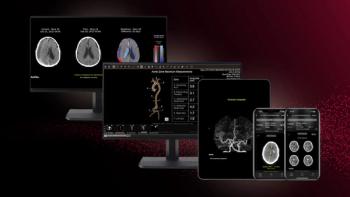
|Slideshows|May 3, 2016
Swollen Cheek
Case History: 20-year-old male with originally painless swelling of right cheek that has become painful.
Advertisement
Case History: 20-year-old male presented with originally painless swelling of right cheek for six months, has become painful.Â
Newsletter
Stay at the forefront of radiology with the Diagnostic Imaging newsletter, delivering the latest news, clinical insights, and imaging advancements for today’s radiologists.
Advertisement
Related Content
Advertisement
Advertisement
Trending on Diagnostic Imaging
1
RSNA: Study Suggests Significant Incidence of Invasive Breast Cancer in Young Women
2
RSNA: Large Knee MRI Study Reveals Greater Incidence of ACL Tears in Men
3
IR Update: FDA Clears Emerging Prostate Tissue Ablation System for Intermediate Risk PCa
4
The Potential of Mammography Image-Based AI Models for Assessing Risk: An Interview with Constance Lehman, MD
5




























